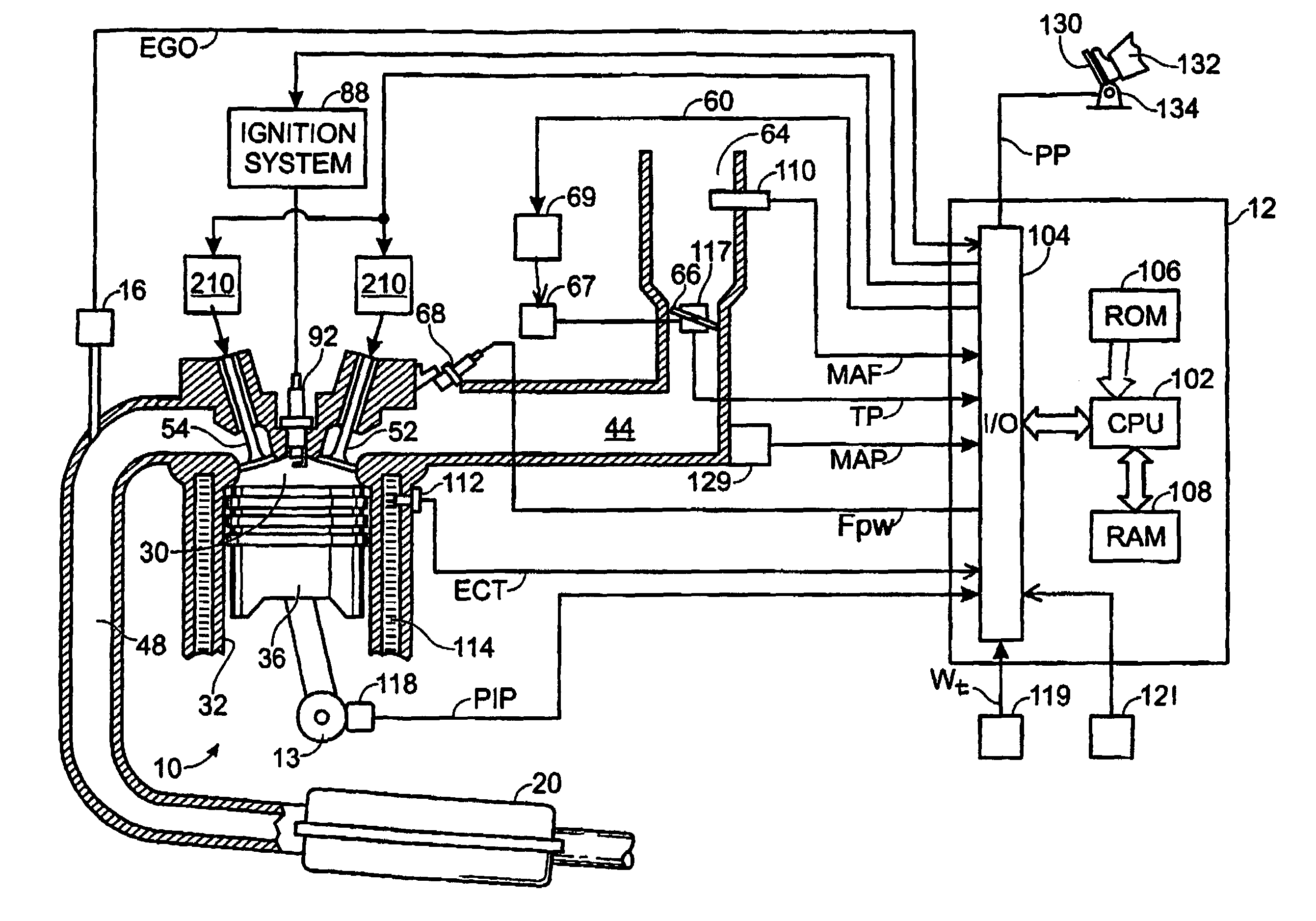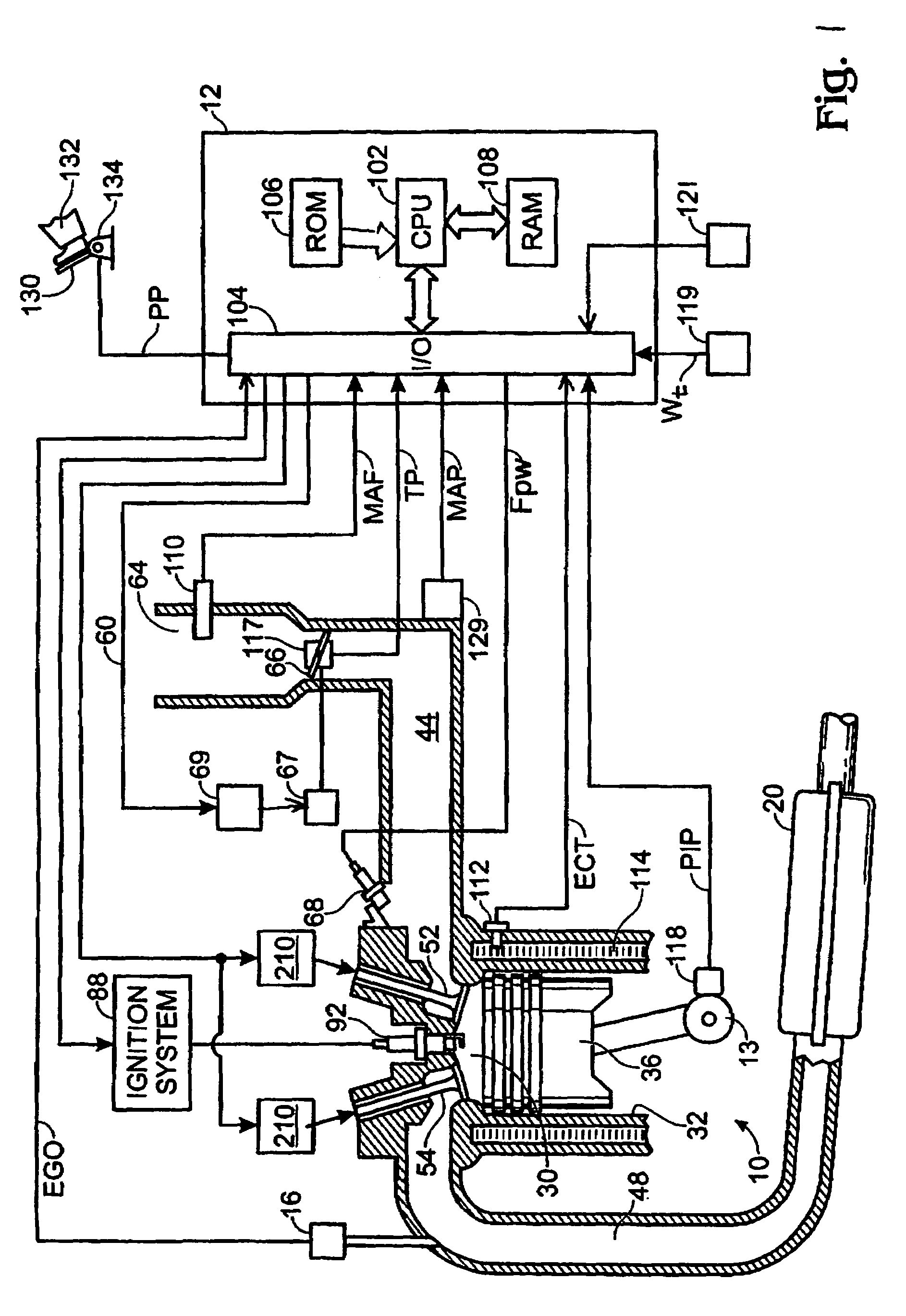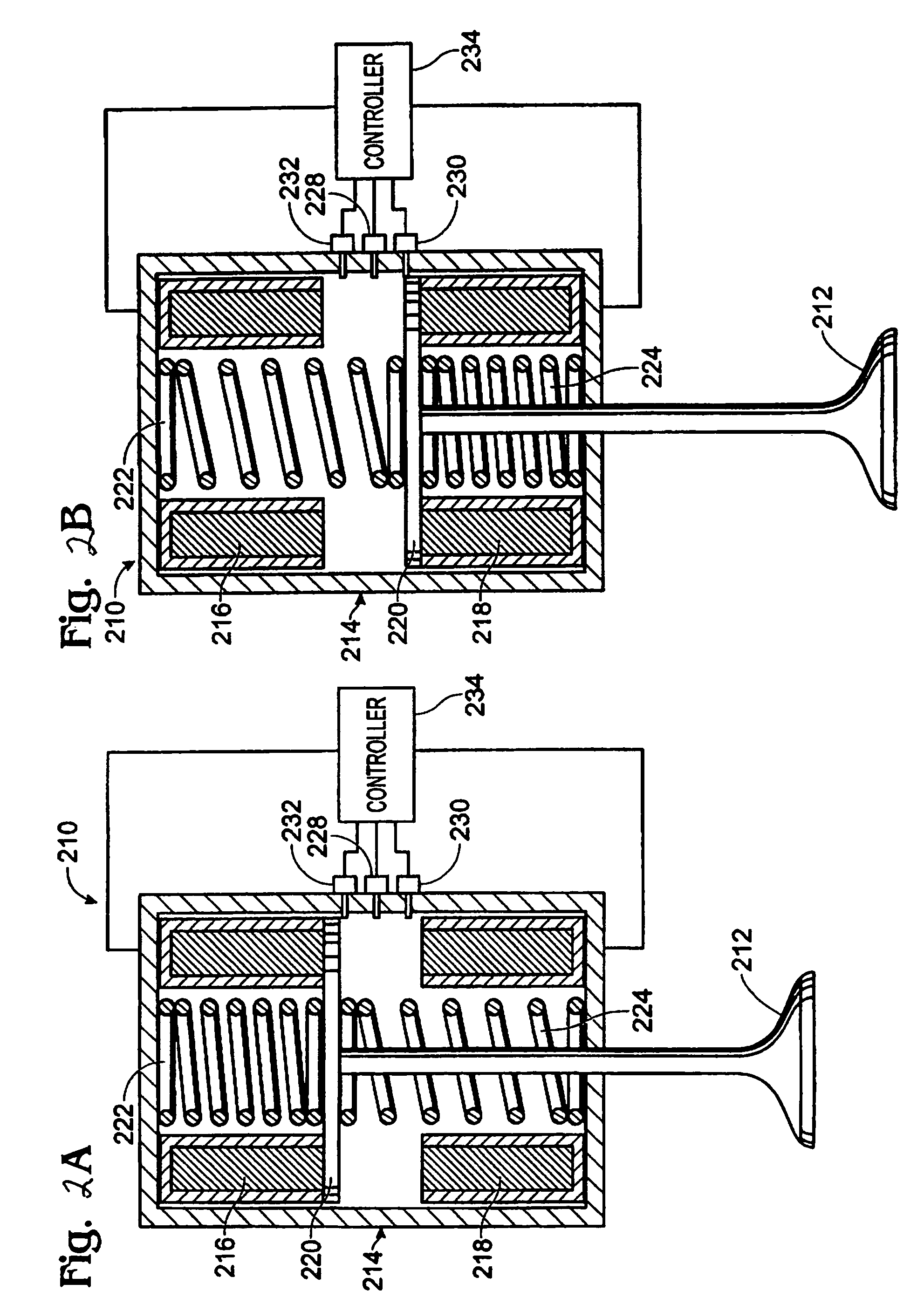Engine expansion braking with adjustable valve timing
- Summary
- Abstract
- Description
- Claims
- Application Information
AI Technical Summary
Benefits of technology
Problems solved by technology
Method used
Image
Examples
Embodiment Construction
[0032]Implementation of fuel-cut operation on engines, such as deceleration fuel shut-off (DFSO), may be challenging due issues such as:[0033](1) catalyst breakthrough and cooling issues due to lean air flow through the exhaust;[0034](2) catalyst performance issues due to the lean exhaust gas flow that may lead to over-storage of oxygen in the exhaust, which may reduce NOx conversion; and[0035](3) limited control of the amount of engine braking provided, which may lead to torque disturbances and reduced drive feel.
[0036]In other words, net flow through the engine may transport heat from the catalyst into the surrounding environment, which may degrade catalyst efficiency. Additionally, the engine braking characteristic may be altered if fuel-cut operation is used.
[0037]Electromechanical valve actuation (EVA) may be used with fuel-cut operation to improve performance. In other words, EVA valves on one side of the engine (intake / exhaust) may be deactivated in the closed position, which...
PUM
 Login to View More
Login to View More Abstract
Description
Claims
Application Information
 Login to View More
Login to View More - R&D
- Intellectual Property
- Life Sciences
- Materials
- Tech Scout
- Unparalleled Data Quality
- Higher Quality Content
- 60% Fewer Hallucinations
Browse by: Latest US Patents, China's latest patents, Technical Efficacy Thesaurus, Application Domain, Technology Topic, Popular Technical Reports.
© 2025 PatSnap. All rights reserved.Legal|Privacy policy|Modern Slavery Act Transparency Statement|Sitemap|About US| Contact US: help@patsnap.com



